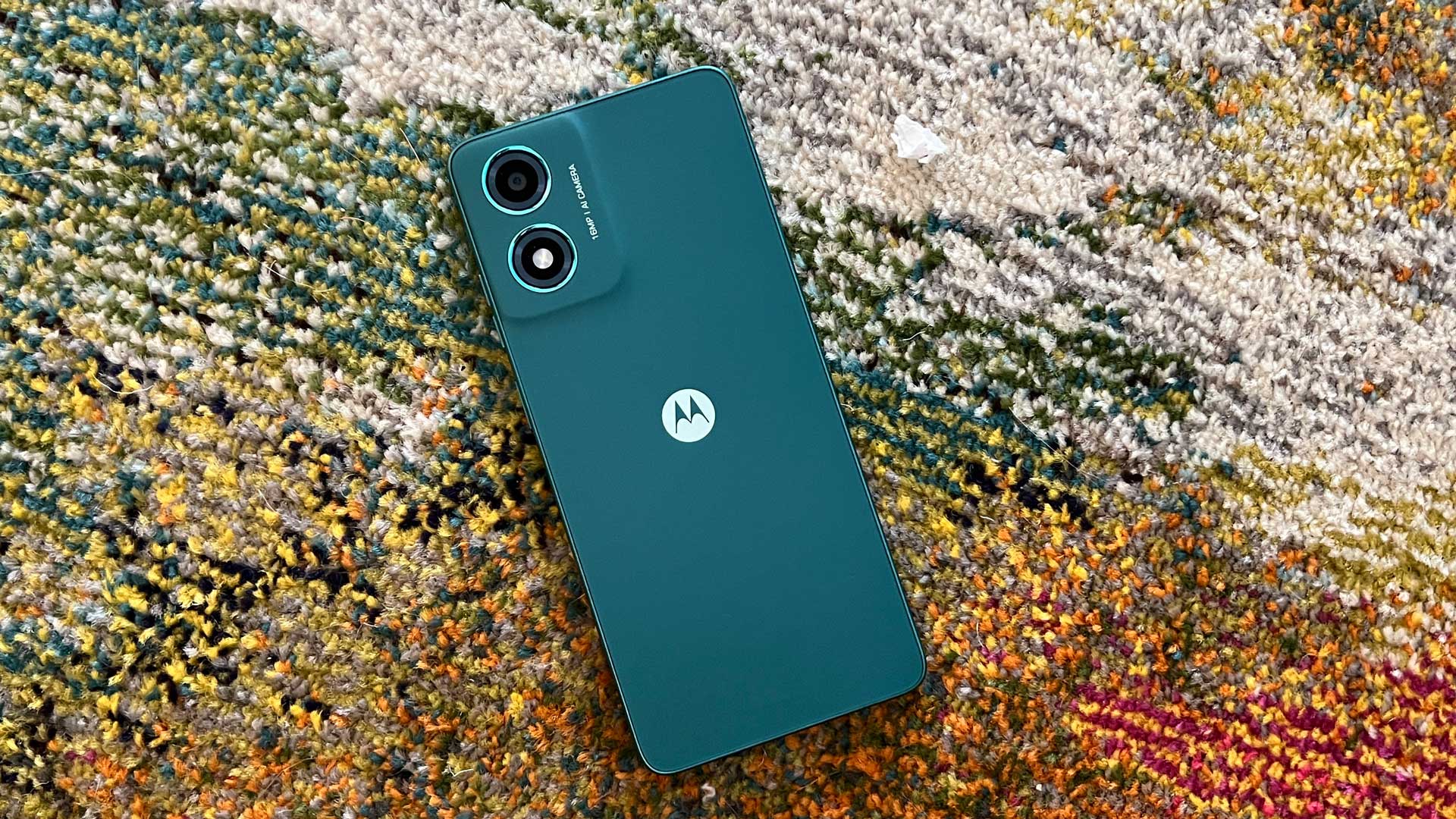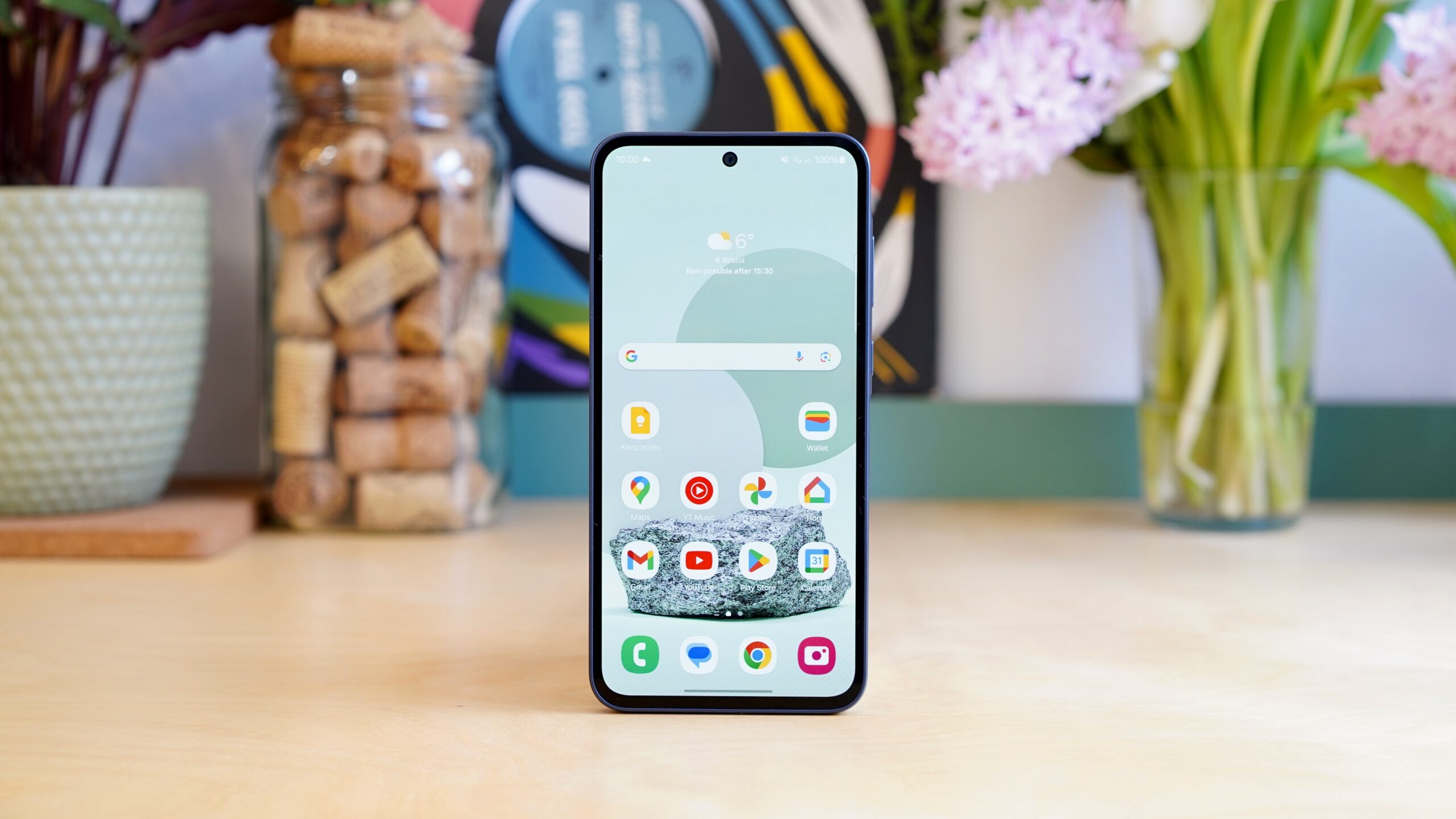Nothing Phone (2a) Review
Nothing releases its cheapest phone yet, but one that retains the brand's signature style
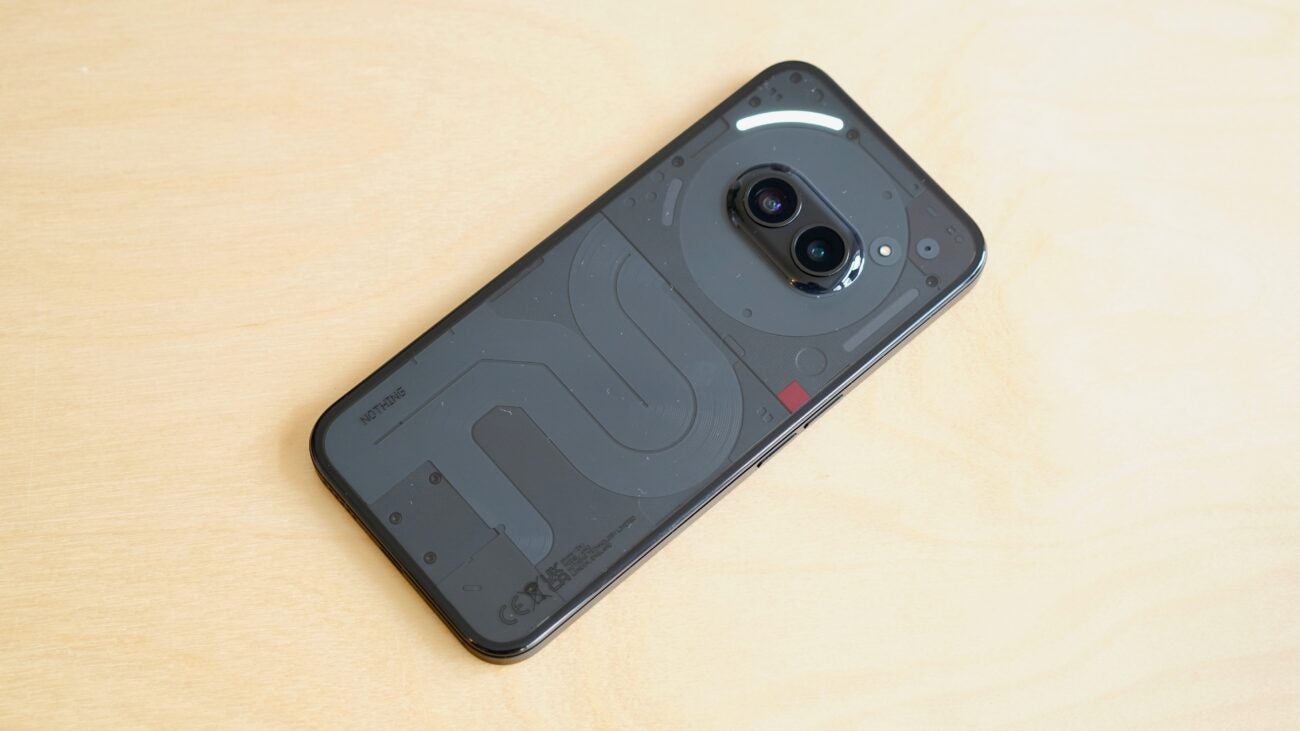

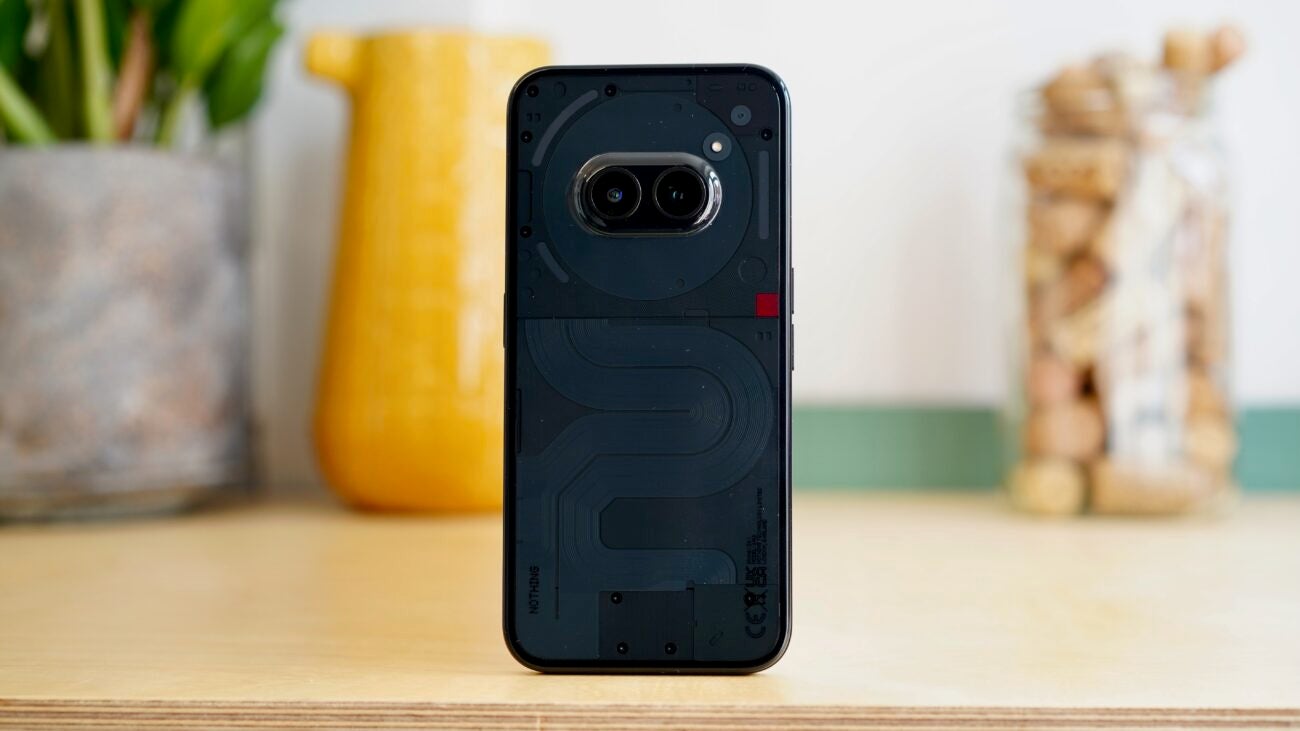
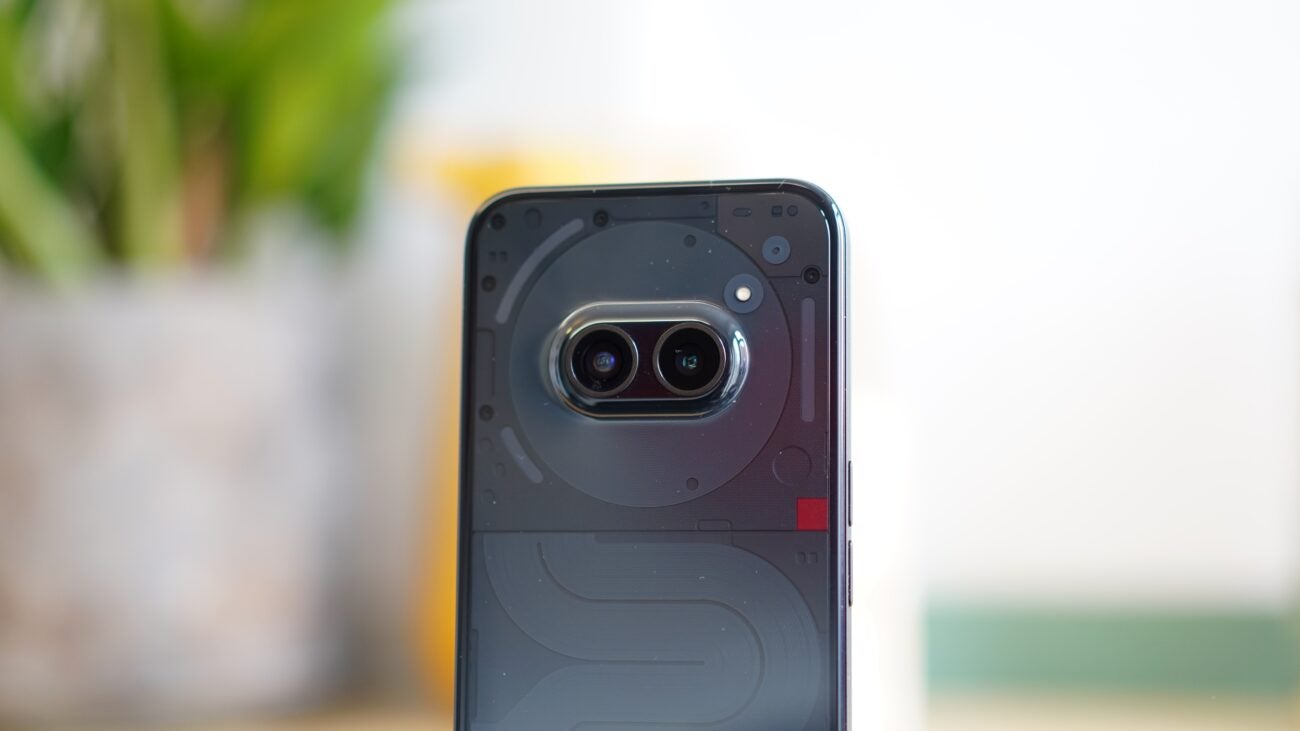
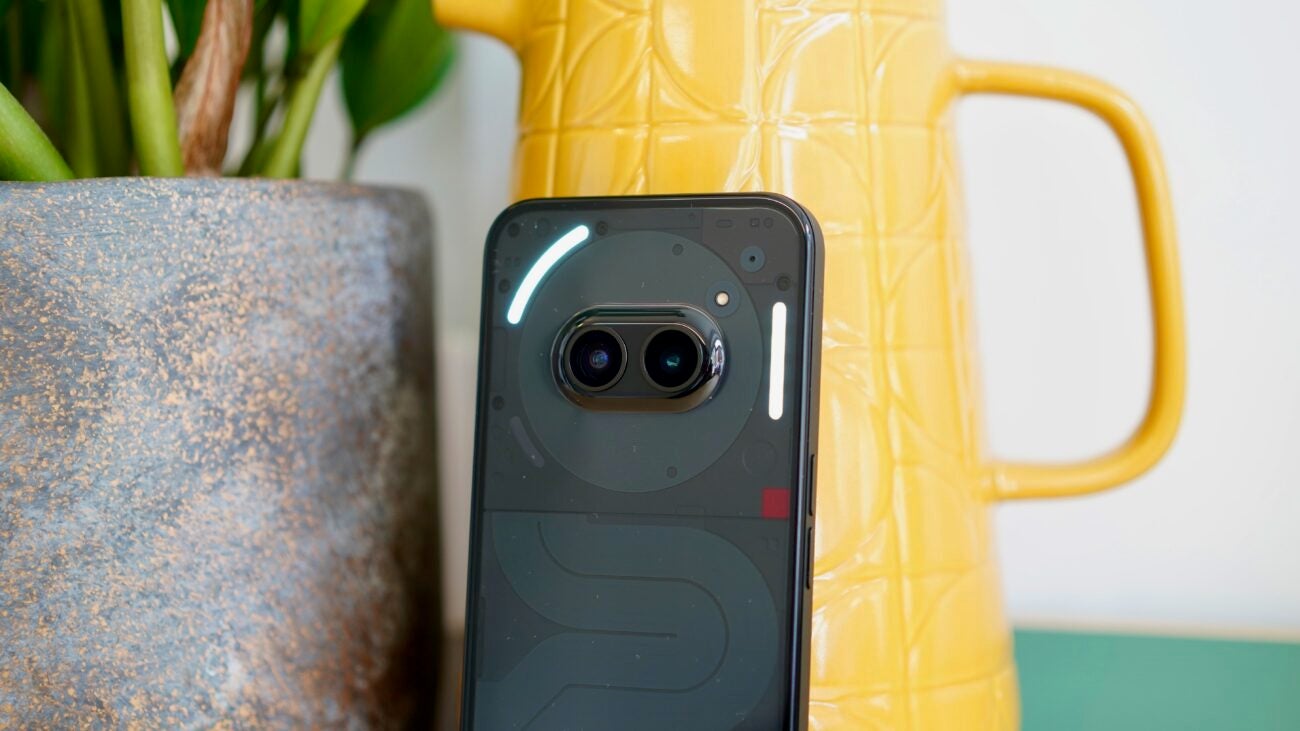
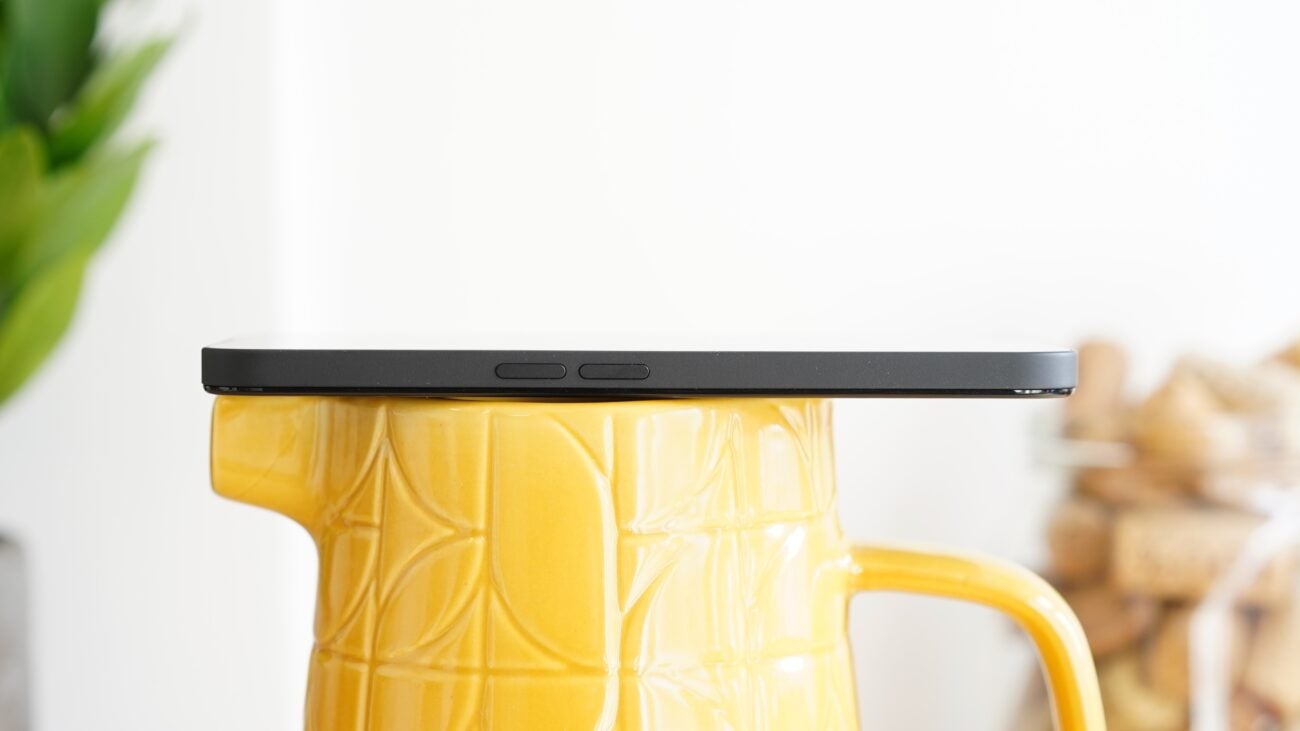

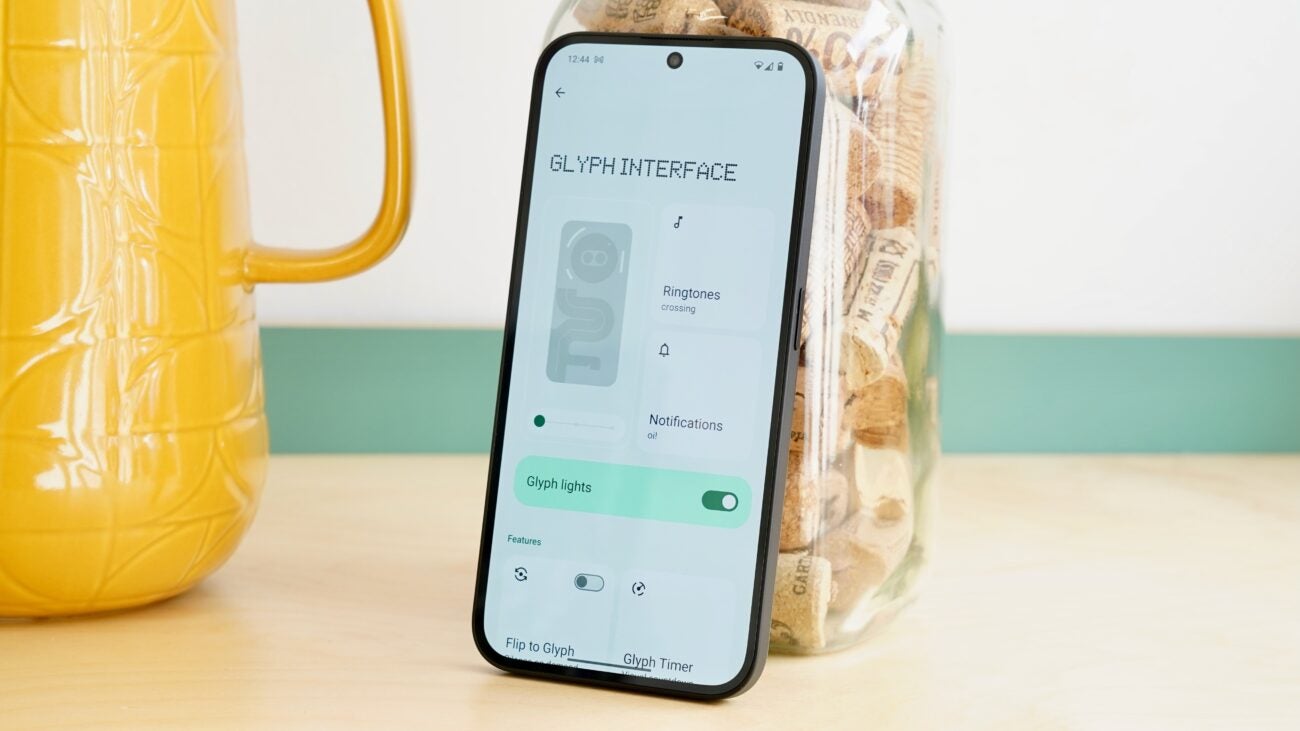
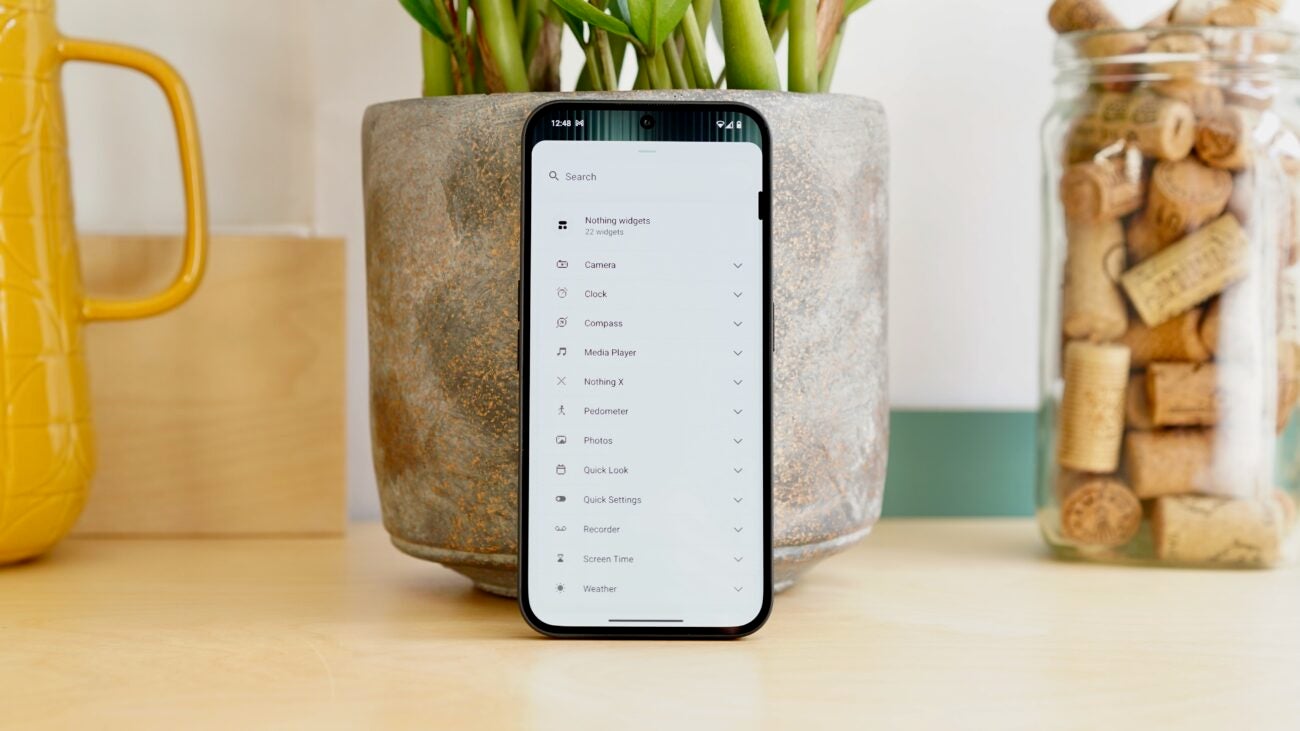

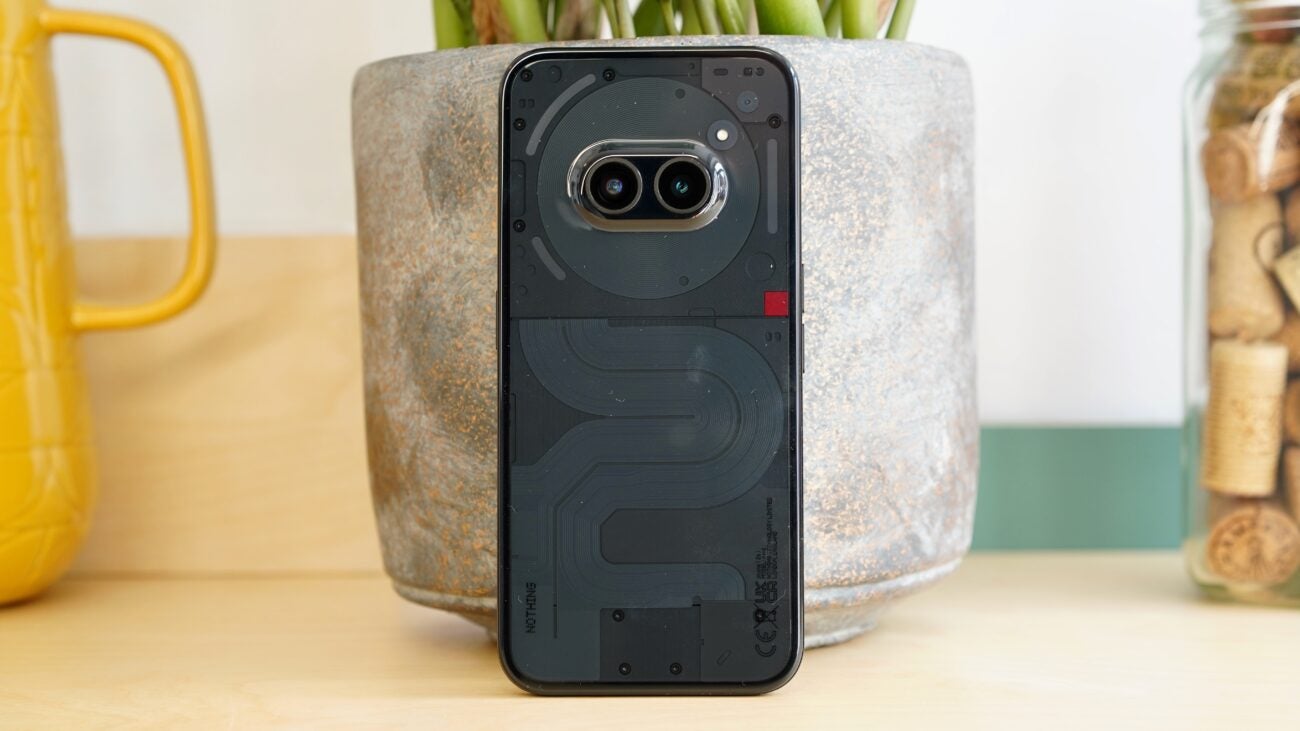
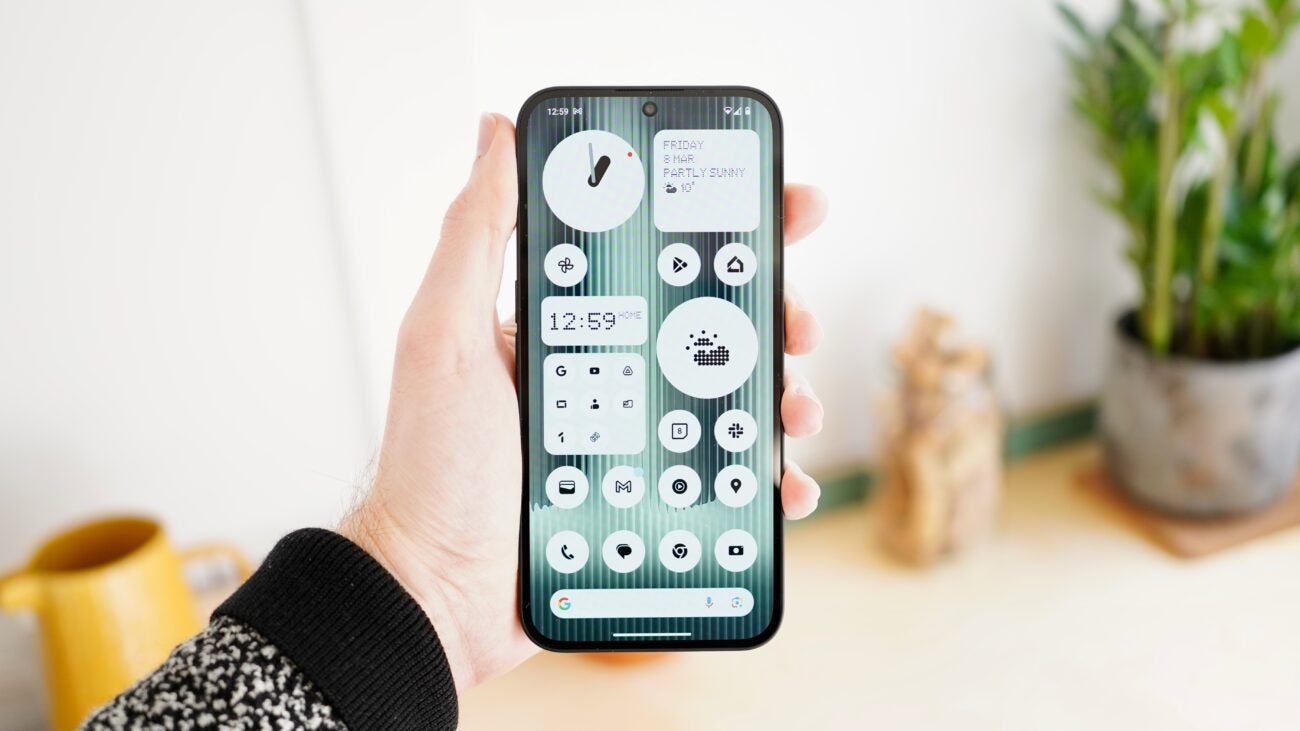

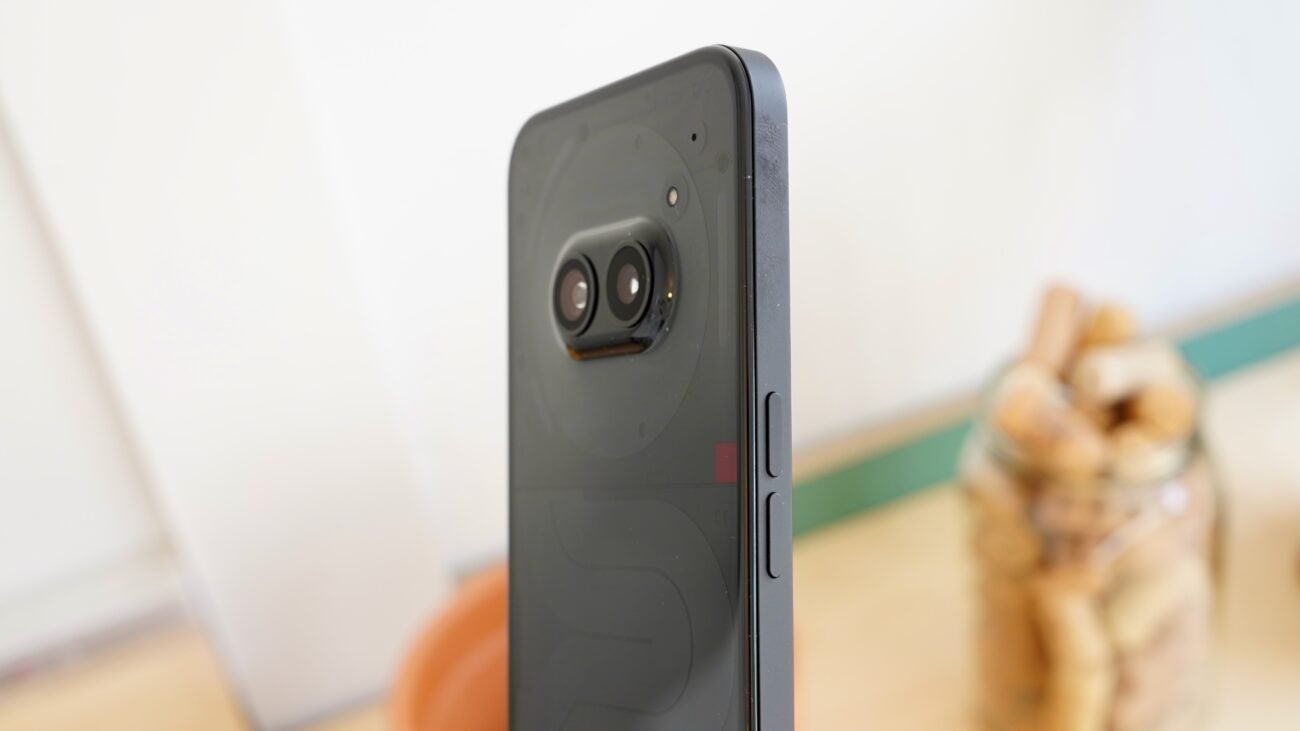

Verdict
The Nothing Phone (2a) might have a flashy design, but its core appeal is how well balanced it is for the money. Build quality, performance, battery life, display and camera are all reassuringly solid, while Phone (2a)’s eye-catching UI and Glyph system offer an extra sprinkling of seasoning.
Pros
- Design and UI both stylish and solid
- Smooth performance
- Strong battery life
Cons
- Nothing OS 2.5 UI embellishments could run deeper
- No wireless charging
- Glyph system significantly stripped back
Key Features
- Speedy performanceMediaTek 7200 Pro chip offers faster performance than the Nothing Phone 1
- Big batteryHefty 5000mAh battery and fast 45W charging
- Unique designGlyth interface and transparent design give it a unique look
Introduction
After upping its game (and pricing) with the Nothing Phone (2), the design-led UK startup has decided to make its most accessible smartphone yet.
The Nothing Phone (2a) aims to provide that by-now-familiar Nothing wow factor at a starting price of just £319. It finds itself in a sub-category of phones that are a little too expensive to be classed as ‘budget’, but still quite a bit cheaper than the established mid-range crowd.
It’s not alone here, with the likes of the Motorola Edge 40 Neo (£299), the Poco X6 Pro (£369), and the Honor Magic 6 Lite (£350) occupying a similar space.
So how much of Nothing’s unique focus on striking design and a smooth user experience have had to be sacrificed on the alter of value? Surprisingly little, as it turns out.
Design
- Signature semi-transparent design preserved
- All-plastic body, but feels solid
- Simplified Glyph interface
You might have expected Nothing to scale things back for its most affordable phone yet, but the Nothing Phone (2a) is a similar size to the Nothing Phone (2) and slightly bigger than the Nothing Phone (1).
This is a big phone alright, with a 161.7 x 76.3 x 8.6mm footprint. It might be the lightest phone Nothing has made at 190g, but only by a few grams, and even then it feels substantial.
That heft might come as something of a surprise when you consider that much of what you touch is plastic, with a semi-transparent plastic back and a textured matte plastic frame. Nothing has used aluminium in the construction, though, which probably accounts for how solid the phone feels.
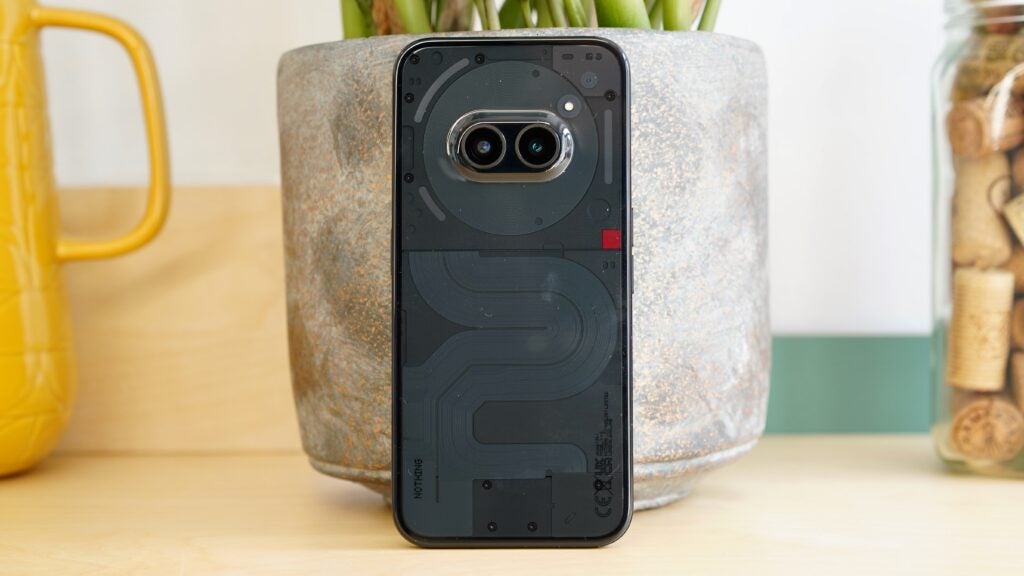
There’s also flat Corning Gorilla Glass 5 around front, and Nothing has actually reduced the size of the bezels from the Phone (2) to just 2.1mm.
It’s true that the Nothing Phone (2a)’s plastic rear soon leads to greasy paw prints, at least on the Black model I’ve been testing. But your eye will likely be drawn beyond the smudginess to the signature Nothing ‘circuit board’ design just beneath.
The circular wireless charging module is no longer the focus, as the Phone (2a) doesn’t have one. Instead, Nothing appears to have accentuated some of the circuitry and the circular NFC module around the camera module.
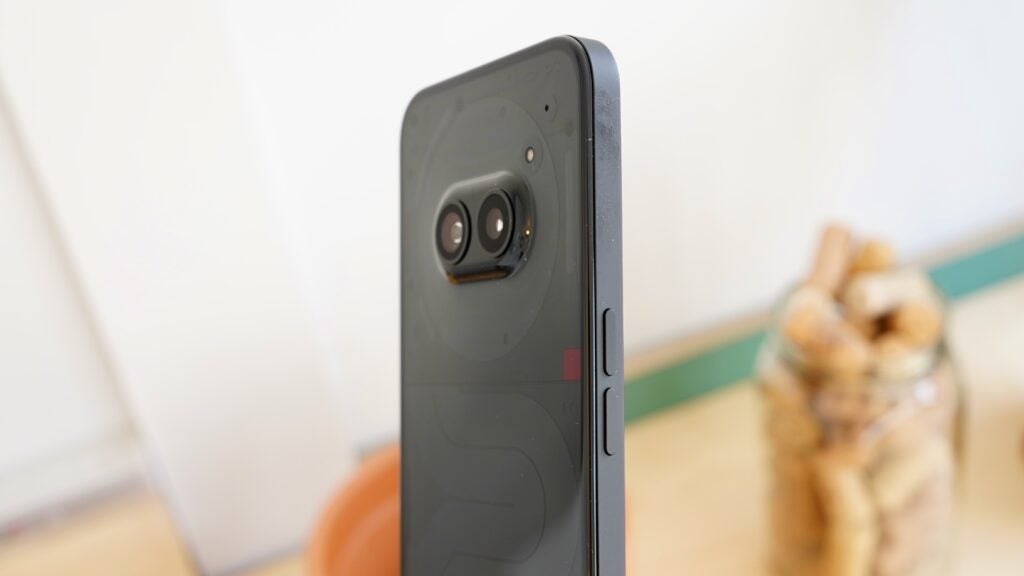
Talking of which, Nothing’s new centrally placed dual-camera module won’t be to everyone’s taste, but I quite like the symmetry it gives the phone. It’s much steadier when placed on flat surfaces, at least.
There are a couple more showy design flourishes here. One is a small red square to the right of the rear section, which adds a subtle splash of colour.
More prominent is Nothing’s signature Glyph interface. It’s been greatly simplified, down from the Nothing Phone (1) and Phone (2)’s 11 LED lights to just the three. But they still light up with incoming notifications, provide visual feedback with camera timers, and can be programmed for a range of other tasks.
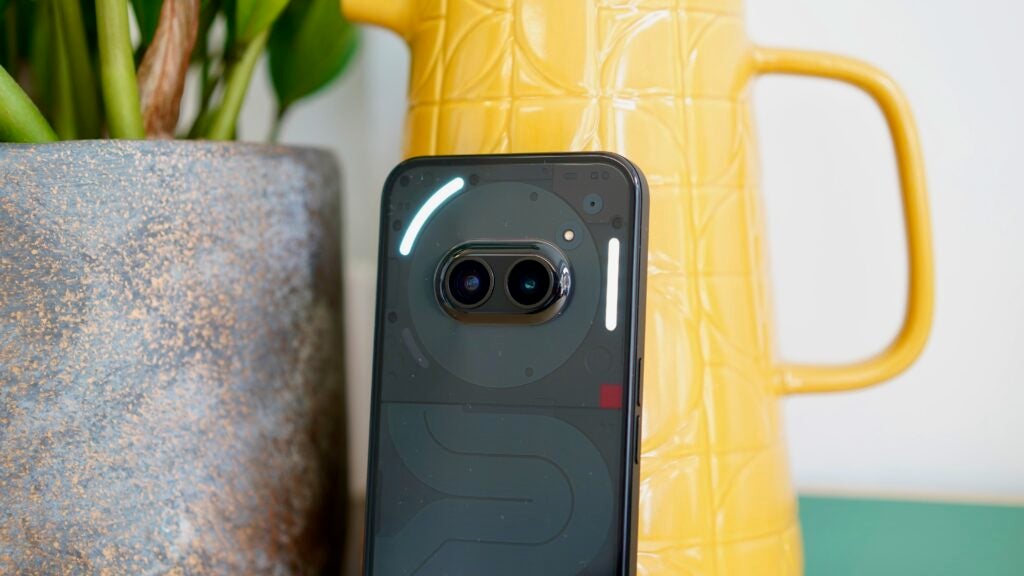
Personally, I didn’t find the Glyph system to be of any practical use, because I never place my phone face-down. Blame a deadly combination of swearing off screen protectors and being paranoid about stray pieces of grit.
An IP54 rating is nothing to write home about, even at this price – the Motorola Edge 40 Neo gives you IP68 for £20 less – but it’s a match for the Poco X6 Pro and indeed the Nothing Phone (2).
Screen
- 6.7-inch 120Hz AMOLED
- 1080 x 2412 (FHD+) resolution
- Bright and reasonably accurate
Nothing has stuck with the Phone (2)’s larger 6.7-inch display, though the Nothing Phone (2a) example isn’t quite so accomplished.
It’s another vibrant AMOLED screen with the same 1080 x 2412 (FHD+) resolution, but it’s not an LTPO panel. This means that it can’t adjust its refresh rate quite so fluidly, making it less energy efficient.
The Phone (2a) screen also doesn’t get as bright as its big brother. It’ll hit 1100 nits in bright sunlight, with a 1300 nits peak in HDR media content. More typically, it’ll be able to hit 700 nits.
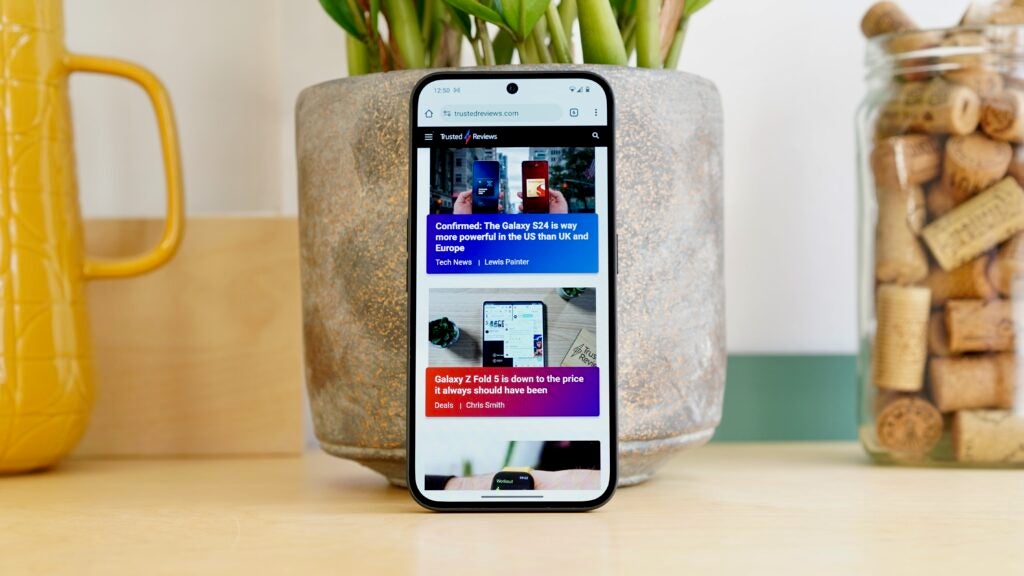
There’s still support for HDR10+, so media content still looks great.
Indeed, this is a pretty strong display for the price. Having switched over to the more natural Standard colour mode, I measured the colour output to be reasonably accurate.
You also get a proper in-display optical fingerprint sensor, which proved nice and reliable in my experience.
Performance
- Mediatek Dimensity 7200 Pro
- 8 or 12GB RAM
- Solid performance for the price
While Nothing’s first two phones ran on Qualcomm power, the company has turned to MediaTek for its third and most affordable handset. Specifically, the Dimensity 7200 Pro.
This is a custom-tuned version of a chip that has found its way, in other forms, into the likes of the Redmi Note 13 Pro+. For the money, it’s a strong performer.
In CPU tests, it drops well short of the Poco X6 Pro, but broadly ties with the Motorola Edge 40 Neo and the Honor Magic 6 Lite.
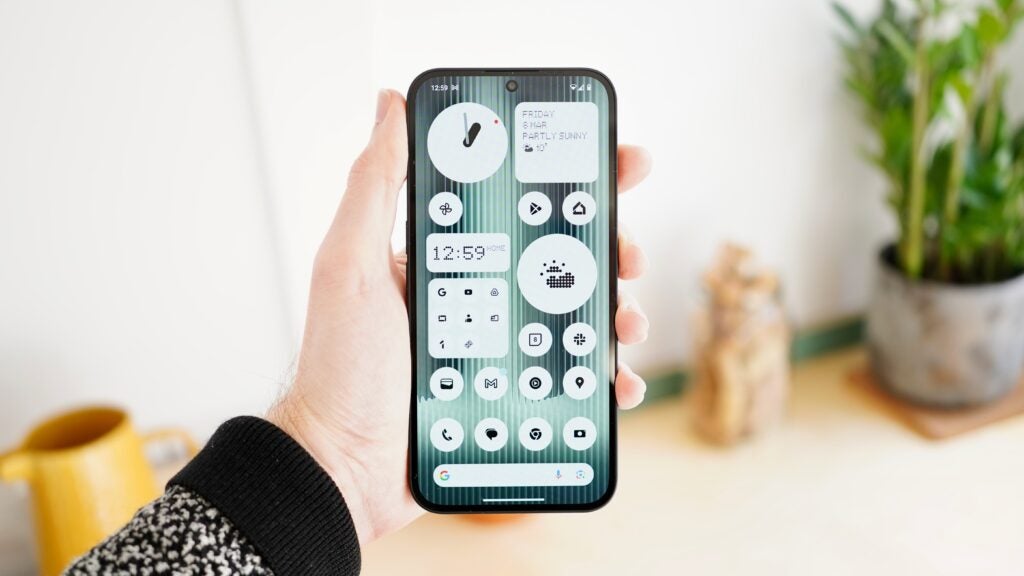
When it comes to GPU performance, the Nothing Phone (2a) is again soundly trounced by the Poco X6 Pro, which really is a performance star in the sub-£400 category. However, it acquits itself well against the Motorola Edge 40 and the Honor Magic 6 Lite.
It falls well short of the Nothing Phone (2) and its Snapdragon 8 Gen 1 in all respects, but then we’re talking about a clear £260 difference in price here.
What matters in any affordable phone is how smooth and snappy it feels in the hand, and on that front I have no complaints. The Nothing Phone (2a) hops between menus and open apps with considerable nimbleness. Slick console racer Wreckfest remains playable on medium to high settings, albeit with notably less consistent frame rate than more expensive phones.
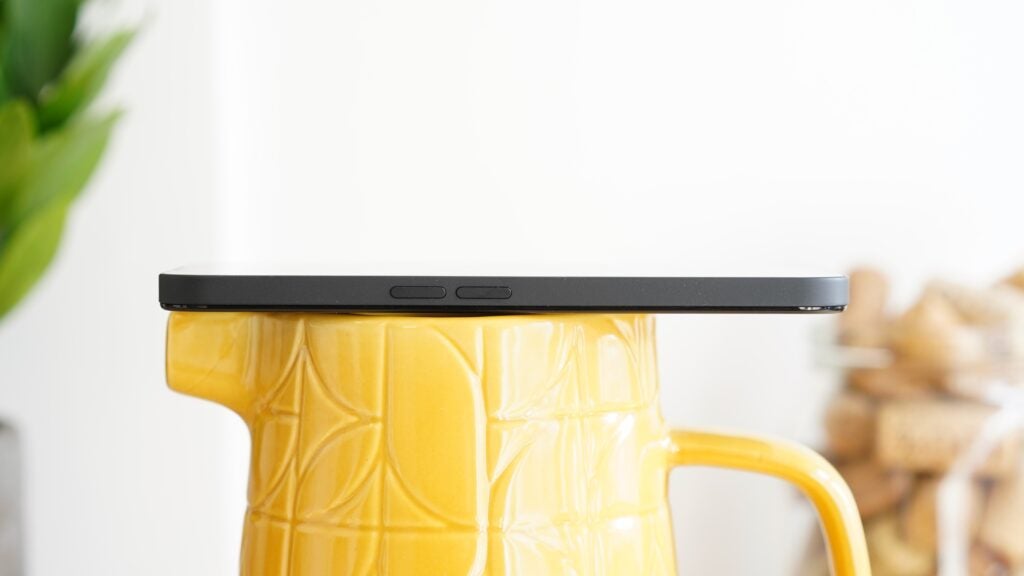
The Dimensity 7200 Pro seems to run nice and cool here too. It’s a 4nm chip, which means it’s built using a similarly compact process to current flagship processors. This manifests in strong thermal performance.
The phone remained reassuringly cool after 30 minutes of light gaming, and scored close to perfect marks on the 3DMark Wildlife Extreme Stress Test, which simulates sustained 3D gaming over a 20-minute period. This means that the chip didn’t get too hot and throttle back.
Camera
- 50MP main sensor produces solid results
- 50MP ultrawide
- 32MP selfie camera
On paper, it looks as if Nothing has used exactly the same dual 50MP camera system on the Nothing Phone (2a) as it did with the Phone (2). There are differences, however.
The main sensor on the Phone (2a) might be another 50MP 1/1.56″ with an f/1.9 aperture and OIS, but it’s a lesser Samsung sensor rather than the Phone (2)’s more advanced Sony one.
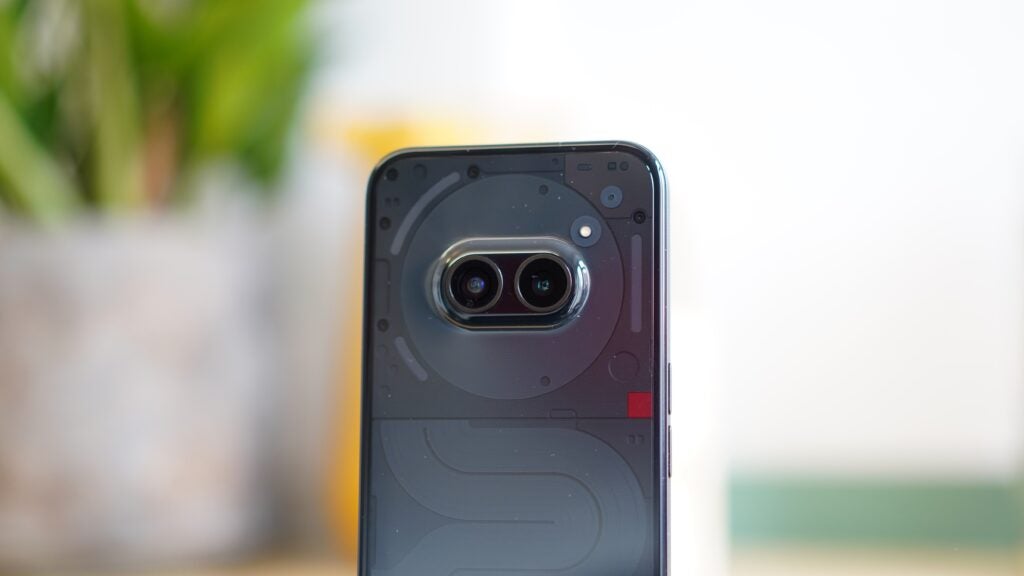
Together with a lesser processor, the Nothing Phone (2a) clearly isn’t as accomplished a snapper as its big brother, but it’s perfectly decent for the money. In side-by-side shots, I found the images it captured to be more natural and better exposed than the Poco X6 Pro 5G.
Night shots aren’t especially impressive, despite the provision of a reasonably large sensor and OIS. They’re sufficiently bright (perhaps overly so), but there was noticeable noise in the moonlit skies, and hints of a general tendency to overexpose brighter elements from time to time.






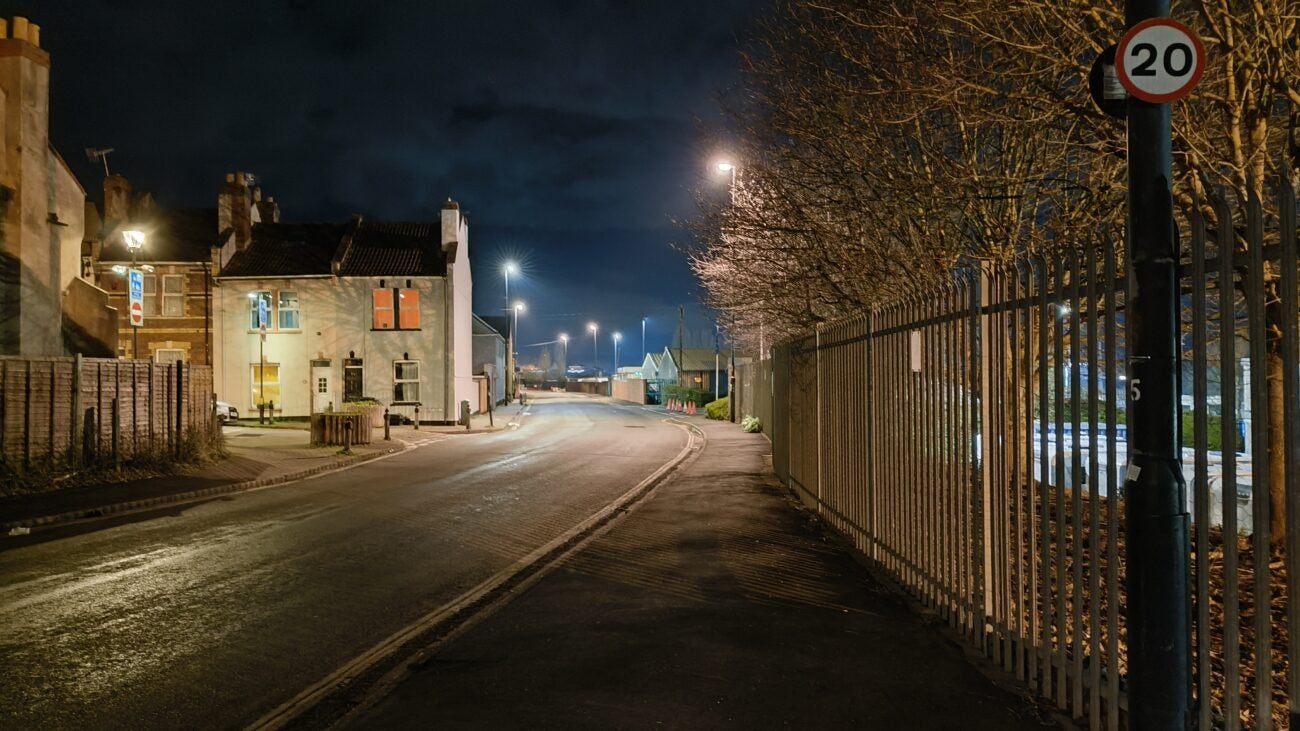
The 50MP 1/2.76″ ultra-wide lays on adequate results. It can’t match the main sensor for detail or dynamic range, of course, but the tone isn’t entirely divorced.
There’s no telephoto camera here, but Nothing crops in on that main sensor for 2x shots to pretty good effect. This also ensures that zoomed shots retain the colour tone of your 1x shots, which is always a nice thing to have.


The Phone (2a)’s 32MP front camera is identical to the Phone 2’s. It produces similarly soft selfies, thanks to the fixed focus, but that’s perfectly acceptable in a phone of this price. It does a passable job with solid skin tones.
On the video front, you’re looking at 4K capture at 30fps, or 1080p at 60/120fps. That’s a competitive provision in a cheaper phone of this kind.


Software
- Nothing OS 2.5 based on Android 14
- Glyph Interface slick but largely a gimmick
- 3 years Android updates, 4 years security updates
The Nothing Phone (2a) runs on Android 14, but it’s the custom Nothing OS 2.5 UI layered on top that warrants all the discussion here.
We’re often slightly sniffy about any UI that strays too far from stock Android, but Nothing is a rare exception. Its approach is fresh and sharp.
Nothing retains Android’s excellent underpinnings, wisely choosing not to mess too much with the notification pane or Settings menus. What it offers is highly stylised icons, folders, and fonts, all of which have a retro pixel-art style to them that feeds into the whole Game Boy Advance vibe given off by the hardware.
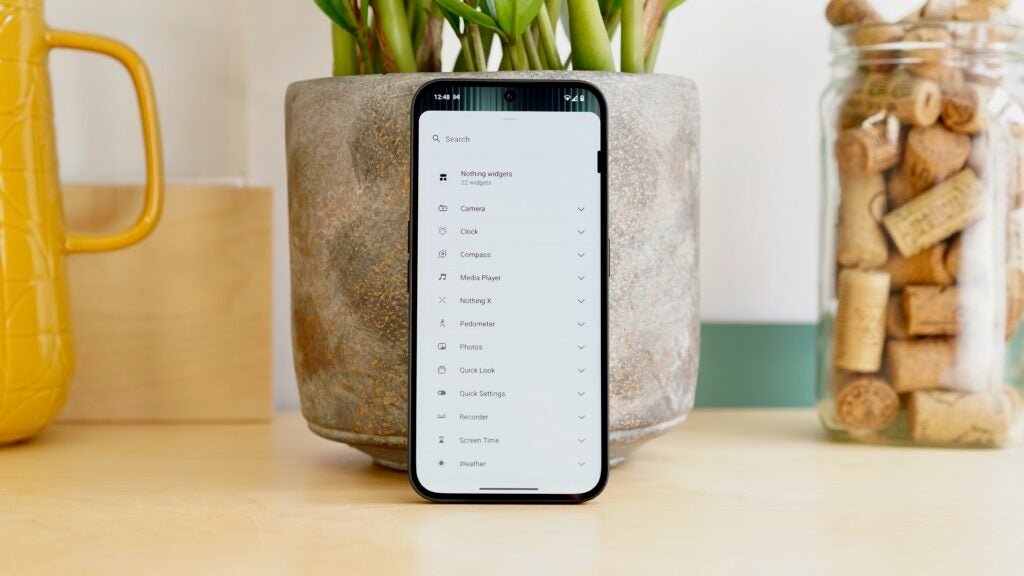
It’s a shame the effect doesn’t run deeper, with only certain third-party apps taking on Nothing’s default monochrome style. It looks a little jarring, with (for example) WhatsApp’s garish green shining out from a background of white or black. Thankfully, you can opt for all-colour.
Nothing also supplies a full Glyph Interface to manage those unique twinkly lights. Through this app you can customise how and where the phone’s three LEDs light up.
As always, these range from the gimmicky to the kind-of-useful. Flashing up incoming notifications can be useful for those who keep their screens face-down (or not, if you do so in the name of discretion), while having one of the lights gradually diminish with the camera timer is a valuable piece of heads-up information.
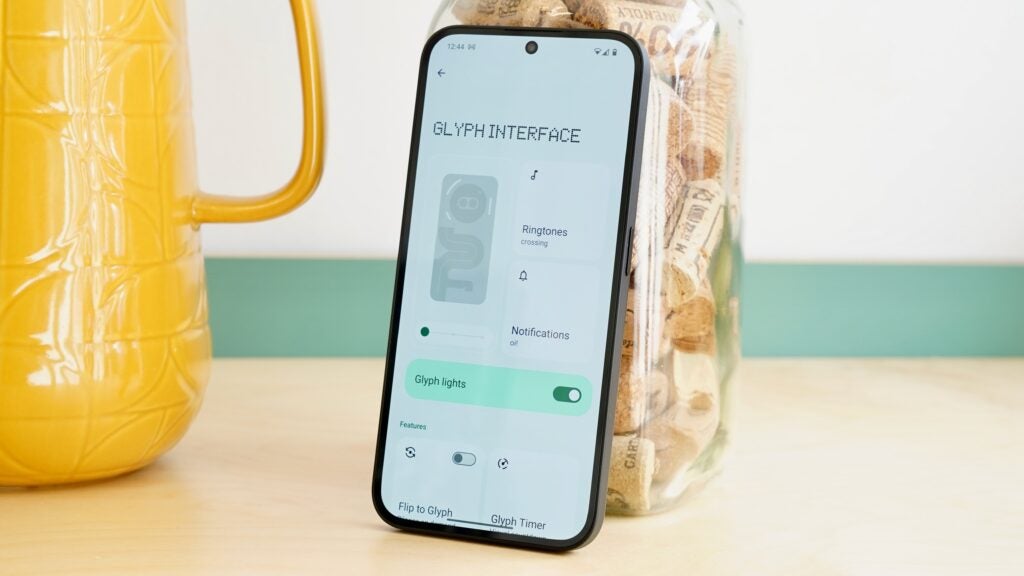
The elaborate light show that can accompany music playback is decidedly less worthwhile, but we’d never begrudge manufacturers having a bit of fun with the staid smartphone format – especially when it’s an optional setting.
Once again, the main downfall of these Glyph settings is that they don’t run deep enough. It’s too easy to forget about the timer glyph when it’s not available in the Clock app, for example. This somewhat reflects the fact that the whole Glyph system feels like a bit of a gimmick, albeit is pleasingly distinctive one.
Nothing promises three years of major Android updates and four years of security updates, which is competitive with its similarly priced rivals.
Battery Life
- 5,000mAh battery with two-day potential
- 45W charging support, but no charger bundled
- No wireless charging
Nothing has given the Phone (2a) its biggest battery yet. True, the 5,000mAh cell is hardly out of the ordinary within a wider cheap phone context, but it’s still a decent capacity.
This also goes some way to explaining why the Phone (2a) is so close to the Phone (1) and Phone (2) in weight despite utilising so much plastic in its construction.
With this larger battery in play, the Nothing Phone (2a) enjoys strong stamina. I was routinely able to get to the end of the full day of light to moderate usage with around half a tankful remaining, even with the display forced to 120Hz rather than the default Dynamic setting. This suggests that it’s ready for two full days if you’re not going to be hitting the media hard.
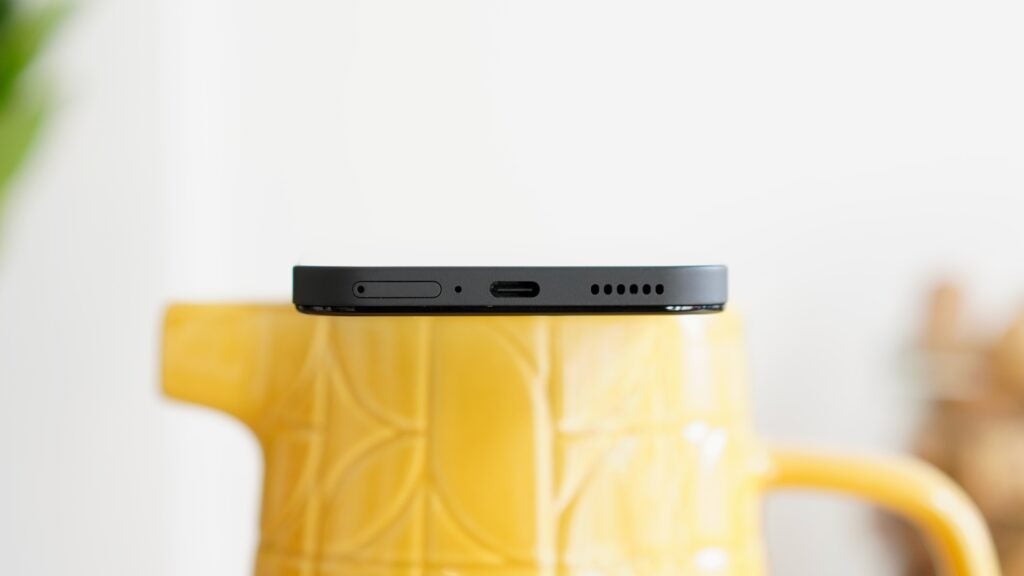
Even if you do enjoy a movie or a gaming session on the go, the Nothing Phone (2a)’s battery will stand up pretty well to the task. It lost just 5% after an hour of Disney+ streaming, and the same after 30 minutes of light gaming.
Nothing doesn’t bundle a charging brick in the box, just one of its stylish USB-C to USB-C cables. Still, the phone supports up to 45W charging, which is reasonable for a phone of this price, if far from outstanding. The Poco X6 Pro includes a 67W charger in the box, while the Motorola Edge 40 Neo includes a 68W charger.
Using a 65W Samsung charger I was able to get the Nothing Phone (2a) from empty to 28 percent in 15 minutes, and to 60 percent in 30 minutes. A full charge takes a little over an hour.
Unlike its predecessors, there’s no wireless charging here. That’s a bit of shame given Nothing’s previous support, but then there aren’t many £300-ish phones that offer such a feature.
Latest deals
Should you buy it?
You want a phone that stands out
With its striking semi-transparent body, Glyph Interface, and stylised UI, the Nothing Phone (2a) sure stands out in an often drab affordable phone market.
You want a subtle, unassuming phone
The Nothing Phone (2a) is stylish, but it’s not subtle, with a large and showy design.
Final Thoughts
Don’t let the Nothing Phone (2a)’s eye-catching design and flashy UI fool you. This is one of the most thoughtfully constructed phones in the £300(ish) weight class.
It might not be as fast as the Poco X6 Pro, but it’s still plenty fast enough to do most things smoothly and efficiently. Nor does the Phone (2a) feel quite as premium as the Motorola Edge 40 Neo, yet it still looks and feels good in the hand. Battery life is strong, too.
There’s a similar sense of balance to its twin camera system, which makes a virtue of unshowy competence rather than gimmicky add-ons. Again, it’s not outstanding at taking pictures, but it does the job quietly and efficiently.
Nothing’s custom UI and Glyph Interface system could still benefit from more depth and purpose, but there’s no denying that both inject some much-needed style and fun into the more affordable side of the smartphone market.
For just £319, the Nothing Phone (2a) is a phone with real poise.
How we test
We test every mobile phone we review thoroughly. We use industry-standard tests to compare features properly and we use the phone as our main device over the review period. We’ll always tell you what we find and we never, ever, accept money to review a product.
Find out more about how we test in our ethics policy.
Used as a main phone for a week
Thorough camera testing in well-lit and low-light conditions
Tested and benchmarked using respected industry tests
FAQs
No, Nothing has sacrificed wireless charging to hit its lower price point.
No, Nothing hasn’t included a charging brick in the box, just a USB-C to USB-C cable.
3 years of major Android updates, 4 years of security updates

